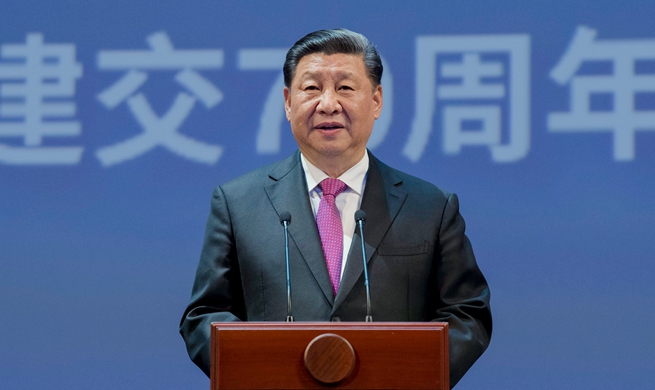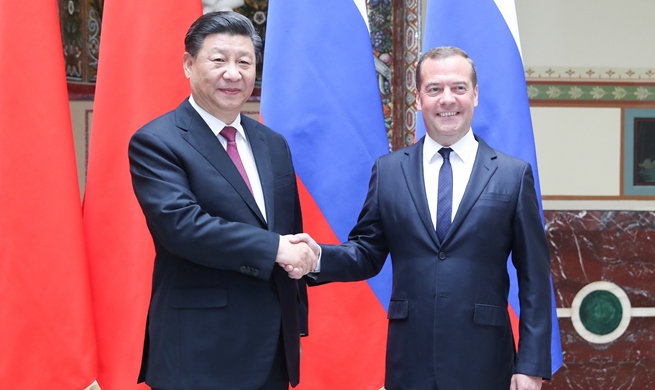WASHINGTON, June 6 (Xinhua) -- The International Monetary Fund (IMF) on Thursday upgraded the U.S. economic growth forecast in 2019 to 2.6 percent, while warning that medium-term risks to its financial stability are rising.
Real gross domestic product (GDP) is expected to grow at an annual rate of 2.6 percent this year, before moderating to 1.9 percent in 2020, the IMF said in a concluding statement that describes the preliminary findings of its annual Article IV consultation to review the U.S. economy.
The estimation, however, only considered the tariffs that have been put in place, which means, if the United States implements all proposed additional tariffs on its trading partners, its GDP growth projection could be lowered.
Rising import tariffs and other steps taken by the Trump administration are "undermining the global trading system," increasing restrictions on trade in goods and services, and catalyzing a cycle of retaliatory trade responses, the IMF said.
"Tariff measures are likely to be ineffective at containing bilateral trade deficits and will be damaging to the U.S. and to global macroeconomic outturns," it continued.
It is "especially important" that the trade tensions between the United States and its trading partners including China and Mexico are quickly resolved through "a comprehensive agreement" that results in a stronger and more integrated international trading system, IMF Managing Director Christine Lagarde said at a press conference Thursday.
Despite improvement of the financial market conditions in recent months, "we are concerned that an abrupt reversal of financial market conditions could represent a material downside risk to the U.S.," Lagarde said.
"In particular, a sudden tightening of financial conditions could interact adversely with the high levels of corporate and public debt, and create a feedback loop that would also weigh on real activity and job creation," Lagarde said, "This is something to watch out for."
The IMF chief added that such a shift in financial conditions would also have negative outward spillovers for corporates, sovereigns and financial institutions in other countries, particularly those with significant leverage or rollover needs in U.S. dollars.

















